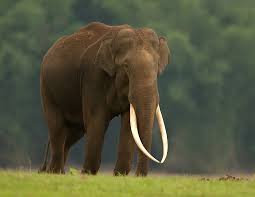GS 3 – Environment & Ecology

Geographic Range
- Native to South and Southeast Asia
- Found in India, Sri Lanka, Nepal, Bhutan, Bangladesh, Myanmar, Thailand, Laos, Cambodia, Vietnam, Malaysia, and Indonesia (Sumatra)
- India hosts over 60% of the global population of Asian elephants.
Conservation Status
| Agency | Status |
| IUCN Red List | Endangered |
| CITES | Appendix I |
| Wildlife Protection Act, 1972 (India) | Schedule I |
Threats
- Habitat loss and fragmentation
- Human-elephant conflict
- Poaching (mainly for ivory, though only males have tusks)
- Linear infrastructure (roads, railways causing elephant deaths)
- Climate change affecting forest ecosystems
Conservation Efforts in India
Project Elephant (1992)
- Launched by the Ministry of Environment, Forest and Climate Change (MoEFCC)
- Focuses on:
- Elephant population protection
- Habitat restoration and corridor conservation
- Human-elephant conflict mitigation
Elephant Reserves
- 33 notified Elephant Reserves across India
- Major states: Karnataka, Assam, Kerala, Tamil Nadu, Odisha, West Bengal, Jharkhand, Chhattisgarh
Gaj Yatra
- Launched by the Wildlife Trust of India (WTI) to raise awareness for elephant corridors.
Elephant Corridors
- Around 101 identified corridors across India (as per WTI)
- Aim: connect fragmented habitats for unhindered elephant movement.
Legal and International Protection
- Protected under Schedule I of the Wildlife Protection Act, 1972
- Part of India’s commitments under CITES and Convention on Migratory Species (CMS)
- India declared the elephant as the National Heritage Animal in 2010.




